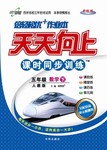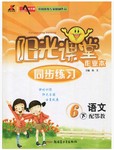题目内容
7.[1]In the tight schedule of modern times,people have no time to prepare nutritious food during the day.They have to walk out early in the morning and spend most of the time at workplaces.Thus,they have to depend on the instant foods that are available in restaurants and hotels.This is the first choice of youngsters for the delicious and attractive taste of junk food.[2]Like every rose has a thorn (刺),_______ associated with junk food as well.Sometimes,because of its easy availability and their delicious taste,people especially the teenagers,get hooked on to it.If they consume fast food on a regular basis,then it can be dangerous to health and leads to diseases.For someone who overconsumes these,it may lead to acidity (酸) and liver failure due to the large amount of fat,salts and oil in it.Too much of junk food on a regular basis can make an individual overweight due to the extra calories hidden in those foods.It affects the concentration levels in studies and other activities too.
[3]It's clear that fast food risks definitely outnumber its positive effects.The bad side of fast food is that it has almost"zero"nutritious value.Despite this fact,we can definitely include them in our menu and exercise proper control over their consumption. The desire for fast food among various individuals right from a child to an adult is so much that one cannot avoid their consumption.So,we cannot avoid fast food completely in our day-to-day life considering their taste,easy access,instant delivery and affordability,but the important thing that we can do is to avoid extreme dependence on these foods.
76.Why do many people prefer to have fast food?(no more than 10words)Because they are too busy./Because they have no time to prepare nutritious food.
77.Fill in the blank in Paragraph 2with proper words.(no more than 4words)there are risks/dangers/problems/
78.What bad effects may be caused by fast food according to the passage?(no more than 6words).①addiction ②diseases ③overweight
79.What may be the best title of the passage?(no more than 10words)The Advantages and Disadvantages of Fast Food/Is Fast Food Good or Bad?
80.Translate the underlined sentence in Paragraph 3into Chinese.从孩子到成年人,不同的人对快餐的渴望非常强烈,没有人能够避免对快餐的消费..
分析 由于快节奏的生活,在工作场所的时间的长度增加,即时食品成了很多人尤其是年轻人的首选.可是这些食品也有很大的负面影响.
解答 76.Because they are too busy./Because they have no time to prepare nutritious food.
77.there are risks/dangers/problems/
78.①addiction ②diseases ③overweight
79.The Advantages and Disadvantages of Fast Food/Is Fast Food Good or Bad?
80.从孩子到成年人,不同的人对快餐的渴望非常强烈,没有人能够避免对快餐的消费.
76 Because they are too busy./Because they have no time to prepare nutritious food.事实细节题.文章第一句话告诉我们现代社会那么多人热衷快餐的原因:In the tight schedule of modern times,people have no time to prepare nutritious food during the day.
77 there are risks/dangers/problems/事实细节题.根据第二段的 If they consume fast food on a regular basis,then it can be dangerous to health and leads to diseases.可知即时食品也有危险,问题,因此可知答案.
78 addiction;diseases;overweight 事实细节题.文章第二部分向我们讲述了快餐不好的影响:容易让人上瘾(即原文所说的:get hooked on to it.)、生病(leads to diseases)以及致使人肥胖(make an individual overweight).根据这几个要点提炼答案即可.
79 The Advantages and Disadvantages of Fast Food/Is Fast Food Good or Bad?主旨大意题.总管全文可以看出,文章的描述的对象是fast food,介绍的是他的两个方面:有点:快速、口味好,还有不足:营养不均衡、让人生病致人肥胖等.
80 从孩子到成年人,不同的人对快餐的渴望非常强烈,没有人能够避免对快餐的消费.翻译题.本句中有个so that 如此以致于,引导结果状语从句,本句的中心词是"渴望,各种各样的,避免,消费".
点评 做阅读表达题时,理清文章的脉络、掌握文章的主旨大意,并能运用简洁的语言表达.回答要有针对性观点要明确.不要摘抄文章原句.

 天天向上课时同步训练系列答案
天天向上课时同步训练系列答案 阳光课堂同步练习系列答案
阳光课堂同步练习系列答案The label"organic (有机的)"(52)B that the United States Department of Agriculture recognized the product was grown under special conditions.The department says foods that meet requirements of it National Organic Programme can use an official label.It shows the words"USDA Organic"inside a(n) (53)A.USDA organic food does not contain genes that have been
(54)A changed.The food is grown without chemical treatment against insects or diseases.It is grown without chemical fertilizers.Before a product can be (55)D"organic,"a(n)C(56)C visits the farm where the food is produced to make sure the farm meets USDA standards.Organic meat,poultry,eggs and dairy products come from animals that are given no antibiotics (抗生素),must be fed organic food and have (57)Bto the outdoors.
No conclusive(58)Dshows that organic food is more nutritious than traditionally grown food.And the USDA-even if it proves organic food-doesn't claim that these products are safer or more nutritious.Organic foods meet the same quality and safety standards as traditional foods.The difference (59)A how the food is produced,processed and handled.Some people buy organic food for (60)D reasons.Organic food is produced by farmers who (61)
C the use of renewable resources and the conservation of soil and water to enhance quality for future generations.The prices between most organic food and traditional food products (62)A.Higher prices are due to more expensive farming practices and tighter government regulations.
The new USDA's national organic programme for labeling are aimed at enabling consumers to make a(n) (63)D choice among the foods they purchase and also include the safeguard of fines for
(64)B.People who sell or label a product"organic"when they know it does not meet USDA standards can be(65)C up to﹩11,000for each violation.
| 51.A.unbelievable | B.familiar | C.different | D.flexible |
| 52.A.predicted | B.guaranteed | C.proposed | D.doubted |
| 53.A.circle | B.operation | C.activity | D.service |
| 54.A.scientifically | B.skillfully | C.vividly | D.deeply |
| 55.A.presented | B.confirmed | C.registered | D.labeled |
| 56.A.protector | B.reminder | C.inspector | D.individual |
| 57.A.solution | B.access | C.entrance | D.direction |
| 58.A.agreement | B.concept | C.expectation | D.evidence |
| 59.A.lies in | B.consists of | C.turns down | D.holds back |
| 60.A.financial | B.social | C.cultrual | D.environmental |
| 61.A.replace | B.overlook | C.emphasize | D.realize |
| 62.A.vary | B.last | C.exist | D.work |
| 63.A.unique | B.potential | C.casual | D.sensible |
| 64.A.limitation | B.misrepresentation | C.reservation | D.reaction |
| 65.A.awarded | B.developed | C.fined | D.spared |
| A. | blaming | B. | blamed | C. | to blame | D. | to be blamed |
| A. | all in all | B. | at the first sight | ||
| C. | in detail | D. | for further details |
| A. | objected having | B. | were objected to having | ||
| C. | objected to have | D. | objected to having |